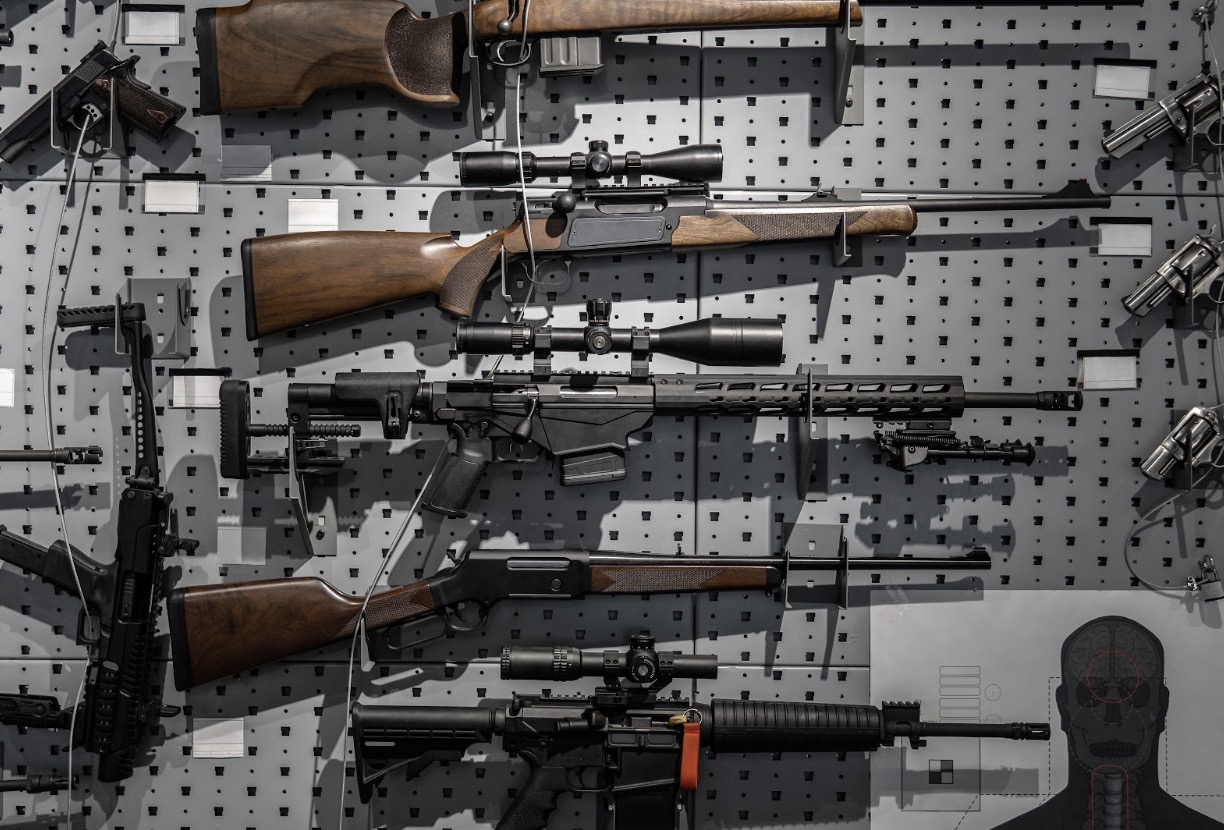Every firearms enthusiast wants to show off their collection in a stylish and secure way. A wall-mounted display case is a way to keep your prized possessions safe and looking their best, all while adding a touch of class to your space.
It becomes more than just a display case—it becomes a conversation starter, a reflection of your love for firearms and appreciation for a well-curated collection. Imagine transforming a blank wall into a personalized showcase that speaks volumes about your passion.
This guide will walk you through creating a custom wall-mounted display case that perfectly complements your home and collection.
Planning Your Design
Take a moment to plan your display case carefully. This initial step helps you visualize the final product and avoid roadblocks during construction.
Below are the essential considerations when planning your design:
Space measurement
Accurately measure the area where you plan to install the display case. This ensures the case fits perfectly without obstructing pathways or cluttering the room.
Material selection
Opt for materials that provide stability and complement the room’s décor. Hardwoods are popular for their strength and rich finishes, while metals such as aluminum offer a modern look that can seamlessly integrate with your home décor.
Visibility and access design
It’s time to plan how to showcase your collection. Consider the angle and spacing of each firearm. You want them to be easy to see and access without playing musical chairs every time you want to admire a specific piece.
Adequate planning not only prevents common pitfalls during construction but also enhances the safety and enjoyment of your display. By carefully addressing these points, you’re setting the stage for a successful build that securely showcases your prized collection.
Selecting Materials
Choosing materials for your gun display case is as critical as choosing an architectural foundation. This selection affects the case’s appearance, durability, and the level of security it provides for your firearms.
For your consideration, here are the recommended materials:
Hardwood
When building the frame, hardwoods like oak, walnut, or cherry are a popular choice. They’re naturally strong and can easily handle the weight of your firearms. These woods age beautifully, developing a rich finish that complements almost any décor. Think of it as giving your display case a timeless foundation.
Tempered glass
Tempered glass is advisable for the front panel due to its high strength and break resistance. This glass provides a secure yet clear view of the firearms within, ensuring safety while handling or viewing and reducing the risk of accidents.
Mounting hardware
The integrity of the display case hinges significantly on the quality of its hardware. Stainless steel brackets ensure longevity and are corrosion-resistant, while an AR 15 mount guarantees each rifle is anchored securely and stylishly without risk of slippage or damage.
Selecting the appropriate materials for your gun display case is pivotal to balancing aesthetics and functionality. By choosing high-quality, durable materials, you ensure that your display is a protective environment for your collection and an attractive addition to your space.
Construction Steps
Building your display case is like putting together a puzzle—each piece must fit just right. Taking time and focusing on the details now will make a big difference later.
To guide you through this process, here are the essential steps:
Cutting the wood
Begin by marking the exact dimensions of your chosen hardwood. Use a high-quality saw to make clean, straight cuts for the frame and shelves, ensuring each piece fits perfectly.
Assembling the frame
Lay out the cut pieces on a flat surface to form the frame. Apply wood glue to the joints before screwing them together, which adds an extra layer of durability. Allow sufficient time for the glue to dry before moving on to the next step.
Installing the glass
Once the frame is secure and the shelves are in place, measure the opening for the glass panel. Have a piece of tempered glass cut to these measurements, then carefully set it into the frame. Secure it with a silicone sealant around the edges to prevent shifting and enhance the case’s overall appearance.
With these steps completed, your gun display case is nearly ready to mount. It’s essential to double-check all connections and fittings to ensure everything is tight and correctly aligned. This meticulous approach improves the display’s safety and functionality, making it a proud addition to your space.

Mounting and Installation
The final step in creating your wall-mounted gun display case is mounting and installing, which is critical for ensuring your firearms’ safety and optimal display quality.
Below are detailed steps for effective installation:
Securing the case
Choose the right location on your wall that can support the weight of the case and the firearms. Use a stud finder to locate the studs in the wall to anchor the case securely. Heavy-duty wall anchors and screws are essential for maintaining the stability of the case, preventing any potential movement.
Mounting your firearms
Each firearm should be mounted using appropriate fixtures that match its specific needs and design. Ensure each mount is aligned correctly and spaced evenly to present a visually appealing arrangement.
Proper installation enhances your firearms’ security and impacts the display’s overall aesthetics. By meticulously following these mounting instructions, you ensure your display case is a safe and stunning showcase for your valuable collection.
Conclusion
Building a custom wall-mounted gun display case is an enriching project that combines aesthetics, functionality, and security. By meticulously planning the design, selecting durable materials, and following detailed construction and installation steps, you create a protective environment for your firearms and an artistic feature for your home. This display case will safeguard your collection and enhance its presentation, turning your passion for firearms into an impressive visual statement.






